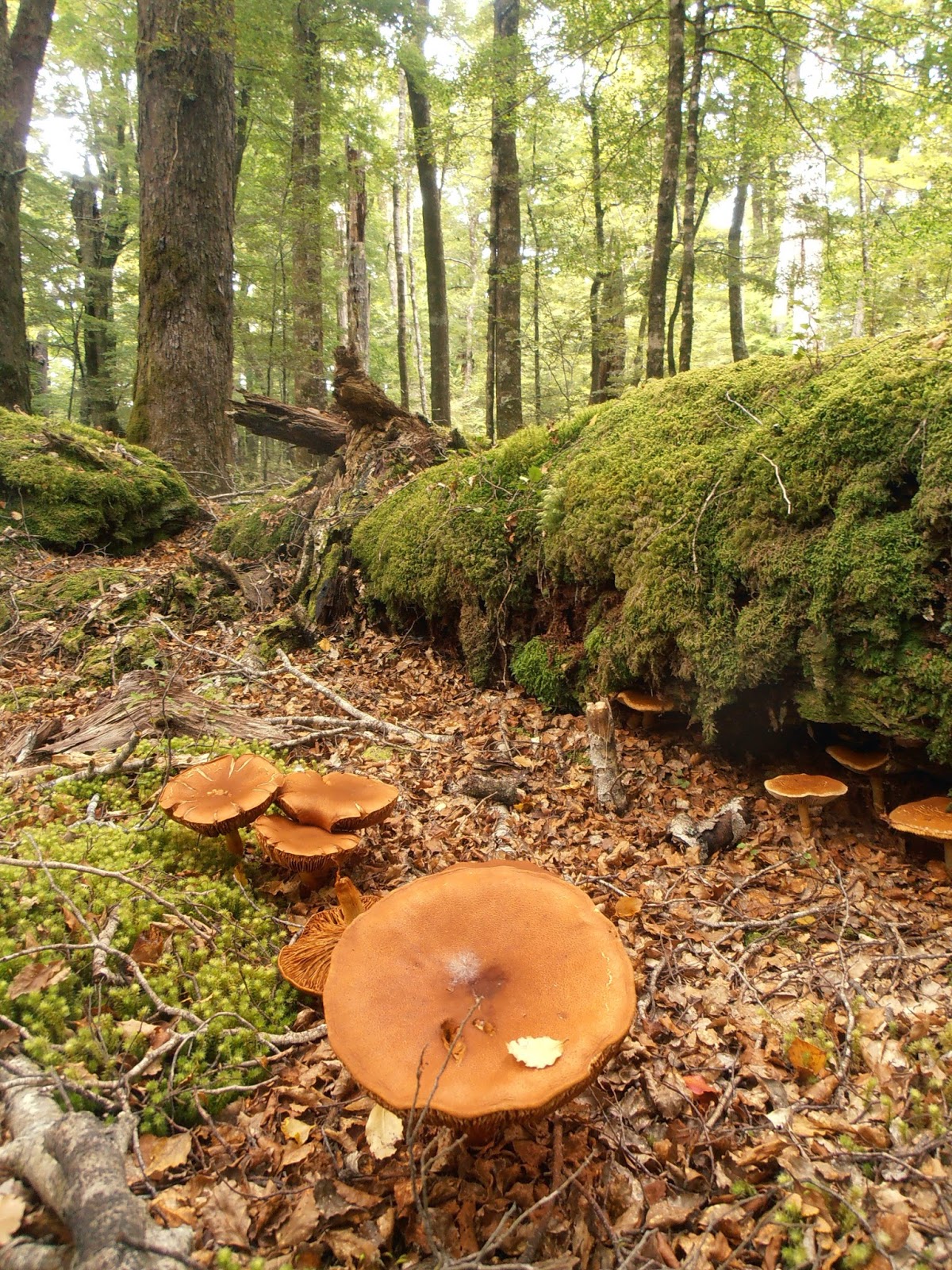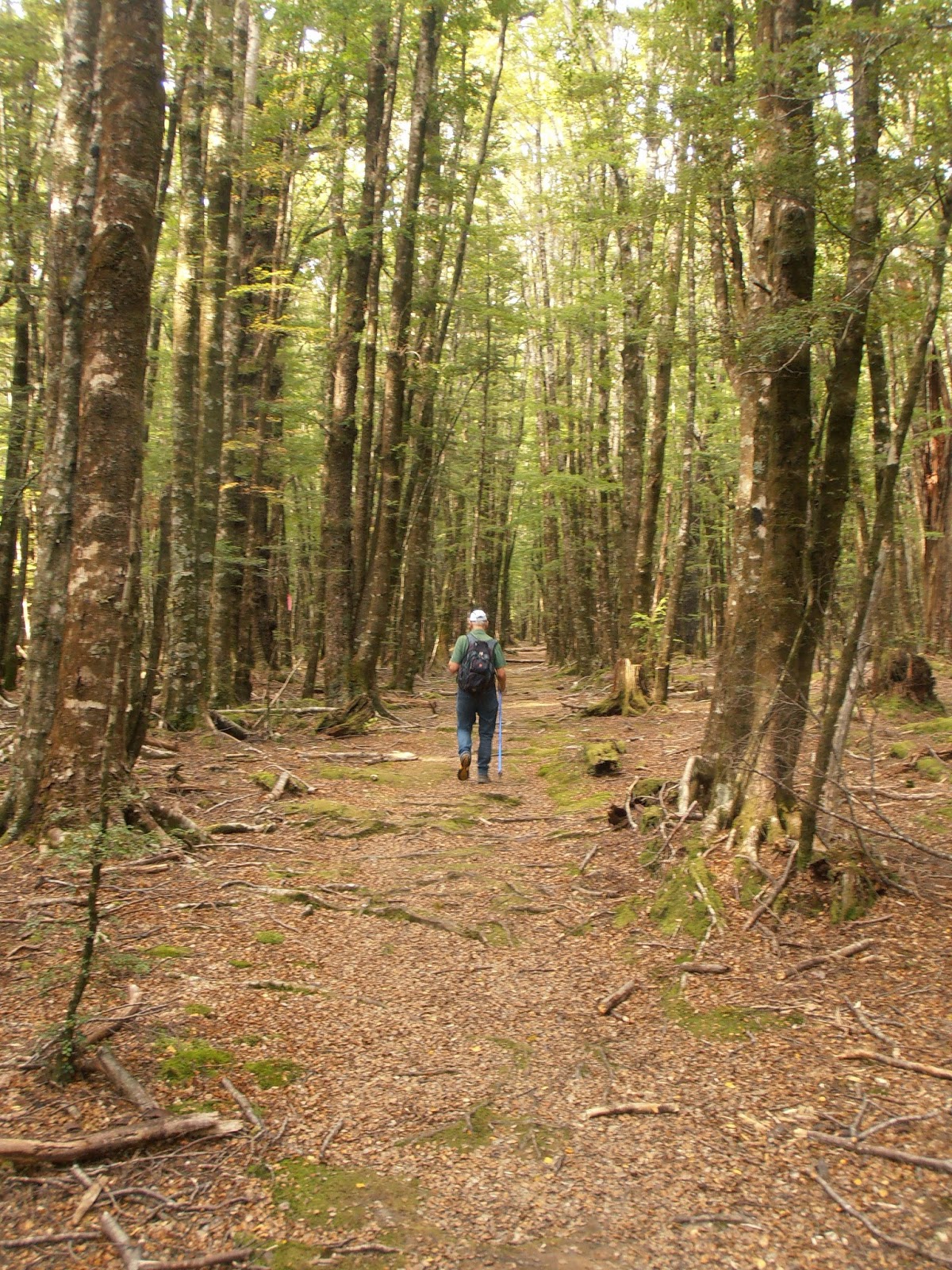Today we have probably travelled one of the longer distances of our trip
since being in the South Island, a distance of 236 kilometres from the top of Lake
Wanaka through to Franz Josef, the most northern of the two glaciers that draw
the tourists here on the West Coast. It is still only mid-afternoon and we are
parked up in the excellent NZMCA park, surrounded in high West Coast bush, and
even higher West Coast mountains, and apart from the fact I can see the sun
catching the snow on the glacier high up to the south and hear the frequent
whirring of helicopter blades as the operators ferry their paying passengers to
and fro, we could be far away from civilisation, even though we are walking
distance to the village.
Last night the van rocked and rolled in the wind, and this morning there
was little abatement; grey skies did not suggest any improvement and the weather
forecasts even less. We left immediately after breakfast heading further north
up the Makarora Valley, this time not stopping as we have on past trips to take
the short walk to the Blue Pools. No sooner did we cross the Haast Pass at 725
metres ASL, that the rain commenced. We looked at each other and laughed; we
were now on the West Coast which is renowned for the rainfall that keeps
everything so lush and green. On the descent we did not stop at the Fantail Falls,
the Gates of Haast or the Thunder Creek Falls, all well worth visiting for the
first time even in the rain, but not for the third time. It was near here, at
the Diana Falls, that two Canadian tourists were swept to their deaths by an
avalanche just last year, a tragedy and a warning that this road is a
treacherous one at times.
At 100 metres ASL where the Haast River converges with the Landsborough
River, the road continues out to the river entrance at Haast Village at a more gentle
undulation. It was on this last stretch of road we encountered many cyclists,
none looking like Grand Tour contenders, all rain sodden and some looking like
they wished they hadn’t started. Fortunately they were cycling upriver so they
caused no frustration to The Chauffeur.
We paused at the Village to check whether their newspapers had come in;
evidently not, a single copy of yesterday’s Christchurch Press remained. We continued on north, now following the coastline,
although that too was obscured by the heavy dark clouds. There was little point
in checking out the views at Knight’s Point or redoing the lovely little walk
at Ship Creek or the Monro Track out to the beach a little to the west of Lake
Moeraki. We remarked at the broody beauty of this lake as we drove past, but
then much of the landscape of this coast is like that, as if holding deep
secrets not to be revealed to the likes of us.
 Lake Paringa is a small lake a little more than ten kilometres further
north, full of trout and salmon if the signs are to be believed. What it does
have a lot of, and the Asian tourists who called in while we were there will attest
this, is sand-flies, in their thousands. The Great Australian Wave to ward off
flies is iconic; so must be the Great New Zealand West Coast Wave to ward off
the sand-flies, aka black flies. We have stayed here in the past, but today we
called in to have lunch, remaining in the motorhome protected by our screens.
It is an incredibly beautiful spot, particularly so today as the rain mist rose
up in the valleys above us.
Lake Paringa is a small lake a little more than ten kilometres further
north, full of trout and salmon if the signs are to be believed. What it does
have a lot of, and the Asian tourists who called in while we were there will attest
this, is sand-flies, in their thousands. The Great Australian Wave to ward off
flies is iconic; so must be the Great New Zealand West Coast Wave to ward off
the sand-flies, aka black flies. We have stayed here in the past, but today we
called in to have lunch, remaining in the motorhome protected by our screens.
It is an incredibly beautiful spot, particularly so today as the rain mist rose
up in the valleys above us. Travelling on we soon found an improvement in the weather, enjoyed the
beach scene at Bruce Bay and the bush and rural scenes that continued as we
did, travelling up Highway 6 which runs more or less north east up the
coastline. At Fox Glacier I picked up the day’s newspaper and a local map, then
we pressed on the further twenty five kilometres to Franz Josef, without
bothering to call at Lake Matheson, renowned for its stunning reflections on
the right kind of day. A walk around the lake is lovely at any time, but a
third time should also be rewarded with those Alpine scenes mirrored in the lake.
I should note too that we have walked all the free walks about these two famous
glaciers, and the weather today did not entice us to repeat these.
Travelling on we soon found an improvement in the weather, enjoyed the
beach scene at Bruce Bay and the bush and rural scenes that continued as we
did, travelling up Highway 6 which runs more or less north east up the
coastline. At Fox Glacier I picked up the day’s newspaper and a local map, then
we pressed on the further twenty five kilometres to Franz Josef, without
bothering to call at Lake Matheson, renowned for its stunning reflections on
the right kind of day. A walk around the lake is lovely at any time, but a
third time should also be rewarded with those Alpine scenes mirrored in the lake.
I should note too that we have walked all the free walks about these two famous
glaciers, and the weather today did not entice us to repeat these.
But we were delighted to find this little refuge from the road, in
itself not that lovely, but surrounded in much of what we love about the West
Coast. There might have been six camping parties when we arrived; now as I look
out the window to revise the count, there are thirteen including ourselves, and
the day is not done. In the meantime the cloud has come down over the glacier,
although the sun is shining down on our solar panels which will make for happy
campers, or at least the menfolk, who spend so much time worrying about such
matters.
We have been in touch with my parents who are currently at Greymouth,
and arranged to rendez-vous with them at Hokitika on Friday. We have extended
an invitation to dine in our yellow room, thus named for the cushions on the
couches. The front lounge, the blue room, will serve as the pre-dinner drinks
lounge. How exciting it will be to entertain, and doubly so given who our
guests will be!








